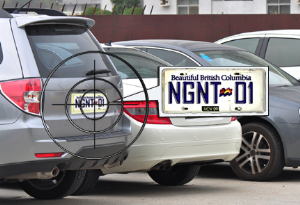
GovComm, a global leader in Intelligent Transportation Systems (ITS) anounces release of its 4th generation of License Plate Recognition (LPR) solotions.
GovComm provides a number of unprecedented advantages for users, including the ability to accurately capture license plate information at speeds up to 120 mph in all kinds of weather and lighting conditions.
Advanced algorithms simultaneously analyze multiple frames of high speed video resulting in pinpoint accuracy that distinguishes characters that are rule based and optically confirmed.
This is a significant advantage over competitors that rely solely on single frames and optical character recognition (OCR). GovComm 4th Generation LPR Camera Systems detect and capture license plates based on video analytics utilizing a multiple frame analysis for higher accuracy, deliver a high capture rate in challenging weather, and illumination conditions and provide advanced reaction capability with instant notification when LPR information is compared to information from a database.
In addition to GovComm’s technical advantages, these LPR systems integrate with third party equipment including barriers, automatic gates, scales, as well as parking and traffic management systems.
The GovComm interface brings real-time video management and includes access to stored and recorded video.
The interface provides a searchable license plate database including critical information such as images, video, date and time stamp and direction.
GovComm LPR integrates with external databases (i.e. stolen vehicles) and adapts quickly to new standards of license plates.
GovComm LPR Camera Systems are perfect solutions for parking areas, automated registration, simplified license plate database searches, integration with the automatic systems, protection of strategic and high security areas, creation of detailed statistical reports, integration with GovComm or third party traffic management software, restriction of entry into municipal areas based on preset policies, utilization for toll payment systems, police and other municipal services, and field operations where network may not be available.
Source: GovComm.us
